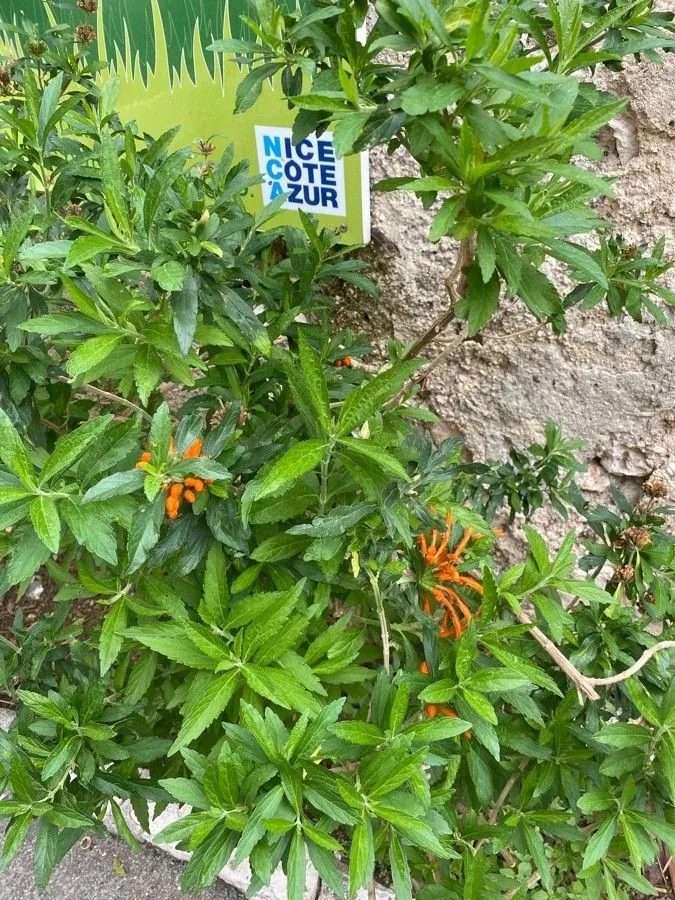
Author: (L.) R.Br.
Bibliography: W.T.Aiton, Hortus Kew. 3: 410 (1811)
Year: 1811
Status: accepted
Rank: species
Genus: Leonotis
Vegetable: False
Observations: S. Africa
Lion’s ear, scientifically recognized as Leonotis leonurus, is an intriguing and attractive plant revered both for its unique aesthetic appeal and its versatile uses. First described in 1811 by W.T. Aiton in his botanically significant work, “Hortus Kew,” this remarkable species hails from the diverse flora of South Africa.
As a proud member of the Lamiaceae family, often referred to as the mint family, Lion’s ear stands out with its vibrant and distinctive appearance. The plant is characterized by its striking orange, tubular flowers that bloom in whorled clusters along tall, erect stems. These eye-catching blossoms are complemented by the plant’s lance-shaped, velvety leaves which add to its overall ornamental charm.
Leonotis leonurus thrives in a variety of environments, often flourishing in the sunny, open landscapes of its native southern Africa. The plant is a hardy, evergreen perennial, capable of withstanding a range of climatic conditions, although it prefers well-drained soils and full sun exposure. It typically reaches heights of up to 2-3 meters, making it a prominent feature in any garden or natural setting.
Beyond its ornamental value, Lion’s ear has been utilized in traditional medicine for centuries. Indigenous peoples have historically harnessed its therapeutic properties, using various parts of the plant to treat a range of ailments, from respiratory issues to fevers and skin conditions. Modern studies continue to explore the potential health benefits of its active compounds, furthering the plant’s reputation as a valuable natural resource.
In addition to its medicinal applications, Lion’s ear is also appreciated for its ecological benefits. The vibrant flowers attract a plethora of pollinators, including bees, butterflies, and hummingbirds, contributing to the biodiversity and health of ecosystems where it is cultivated. Its robust growth also makes it a useful plant for soil stabilization and habitat restoration efforts.
Whether admired for its striking beauty, valued for its healing properties, or utilized in ecological conservation, Leonotis leonurus—Lion’s ear—remains a plant of significant interest and importance. Its enduring legacy, documented since the early 19th century, continues to captivate botanists, gardeners, and nature enthusiasts around the world.
Eng: lion’s ear
Por: cauda-de-leão, dagga
En: Lion’s ear
Pt: Cauda-de-leão, Dagga
Taken May 3, 2017 by Rémi Knaff (cc-by-sa)
Taken May 3, 2017 by Rémi Knaff (cc-by-sa)
Taken Apr 21, 2019 by Camila Basterrica (cc-by-sa)
Taken Dec 15, 2021 by Trap Hers (cc-by-sa)
Taken Oct 29, 2020 by Francois Mansour (cc-by-sa)
© copyright of the Board of Trustees of the Royal Botanic Gardens, Kew.
© copyright of the Board of Trustees of the Royal Botanic Gardens, Kew.
© copyright of the Board of Trustees of the Royal Botanic Gardens, Kew.
Taken Oct 6, 2022 by Fabrice Rubio (cc-by-sa)
Taken Dec 15, 2021 by Trap Hers (cc-by-sa)
Taken Sep 12, 2022 by Fabrice Rubio (cc-by-sa)
Taken Oct 2, 2022 by Fabrice Rubio (cc-by-sa)
Taken Oct 29, 2020 by Francois Mansour (cc-by-sa)
Taken Jan 26, 2019 by Bastián Fuentes Valdés (cc-by-sa)
Taken Sep 28, 2022 by Nobby Ashcroft (cc-by-sa)
Taken May 3, 2017 by Rémi Knaff (cc-by-sa)
Taken Mar 31, 2018 by Mauro Mauro (cc-by-sa)
Taken Oct 24, 2019 by claudine broisseau (cc-by-sa)
Taken Jul 20, 2022 by Maarten Vanhove (cc-by-sa)
Taken Feb 13, 2021 by Michael Sullivan Michael Sullivan (cc-by-sa)
Taken Oct 6, 2022 by Fabrice Rubio (cc-by-sa)
Taken Oct 6, 2022 by Fabrice Rubio (cc-by-sa)
Taken Sep 12, 2022 by Fabrice Rubio (cc-by-sa)
Taken Jun 25, 2019 by Romà Ricard (cc-by-sa)
Taken Jul 7, 2022 by Abinala Shonga (cc-by-sa)
Taken May 16, 2022 by Dan Maxwell (cc-by-sa)
Taken Jun 27, 2022 by Tristan Jaton-Maria (cc-by-sa)
Taken Oct 24, 2019 by claudine broisseau (cc-by-sa)
Taken Aug 16, 2021 by Jacques Zuber (cc-by-sa)
Taken Jun 18, 2021 by Joan Francesc (cc-by-sa)
Taken Jun 10, 2020 by Françoise (cc-by-sa)
Taken May 3, 2021 by conito (cc-by-sa)
Taken Jul 7, 2021 by Joan Francesc (cc-by-sa)
Growth habit>: Shrub
Family: Myrtaceae Author: (F.Muell.) K.D.Hill & L.A.S.Johnson Bibliography: Telopea 6: 402 (1995) Year: 1995 Status:…
Family: Rubiaceae Author: Pierre ex A.Froehner Bibliography: Notizbl. Bot. Gart. Berlin-Dahlem 1: 237 (1897) Year:…
Family: Sapindaceae Author: Koidz. Bibliography: J. Coll. Sci. Imp. Univ. Tokyo 32(1): 38 (1911) Year:…
Family: Asteraceae Author: A.Gray Bibliography: Pacif. Railr. Rep.: 107 (1857) Year: 1857 Status: accepted Rank:…
Family: Fabaceae Author: Medik. Bibliography: Vorles. Churpfälz. Phys.-Ökon. Ges. 2: 398 (1787) Year: 1787 Status:…
Family: Aspleniaceae Author: (Cav.) Alston Bibliography: Bull. Misc. Inform. Kew 1932: 309 (1932) Year: 1932…